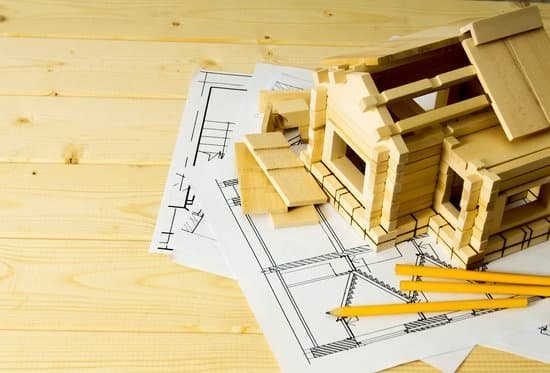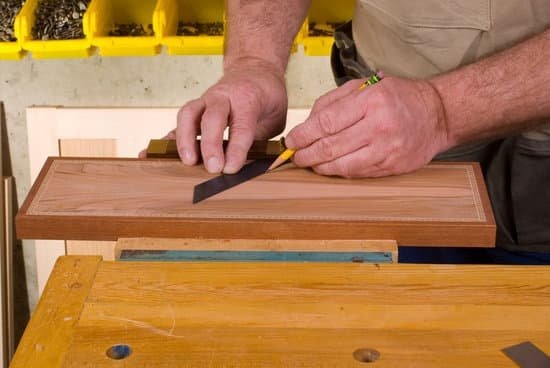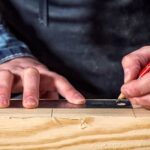Woodworking projects often require a strong and durable adhesive to ensure long-lasting and visually appealing results. Epoxy has become a popular choice among woodworkers for its excellent bonding abilities, versatility, and ability to enhance the overall strength of wooden structures.
However, with various epoxy options available in the market, choosing the right one can be overwhelming. In this article, we will explore the top epoxy choices for woodworking, providing insights into their characteristics, pros and cons, as well as their suitability for different woodworking applications.
When it comes to woodworking, selecting the right epoxy is crucial for achieving optimal results. The type of epoxy you choose will depend on several factors such as the specific woodworking project at hand and your desired outcome. In this blog post, we will discuss eight epoxy options that have proven to be exceptional choices for woodworkers.
Understanding the various types of epoxy available is essential in making an informed decision. Each epoxy type possesses unique characteristics and properties that make it suitable for specific woodworking applications. We will delve into detail regarding these different types of epoxy, discussing their pros and cons as they relate to woodworking projects.
Additionally, we will highlight how epoxy enhances the strength and durability of wooden structures. From strengthening joints to filling gaps and acting as a protective sealant against moisture and external elements, epoxy plays a crucial role in ensuring long-term stability in woodworking projects. Through examples or case studies from experienced woodworkers, we will showcase remarkable results that can be achieved by using epoxy in woodworking.
By exploring water-based epoxy, solvent-based epoxy, UV-cured epoxy, marine-grade epoxy, among others in this article series, we hope to provide readers with comprehensive information about each type’s features and benefits. Moreover, we will analyze their suitability for different woodworking scenarios and offer recommendations based on specific wood types to ensure successful outcomes.
With our extensive exploration of various epoxies used in woodworking projects combined with practical recommendations on pairing them with different wood species, you will be equipped with the knowledge needed to make informed choices. Stay tuned as we embark on this journey through the top epoxy choices for woodworking and discover the perfect match for your future projects.
Understanding the Various Types of Epoxy for Woodworking
When it comes to woodworking projects, choosing the right epoxy is crucial for achieving optimal results. Epoxy is a versatile adhesive that provides strength, durability, and a protective sealant for wooden structures.
However, with so many epoxy options available on the market, it can be overwhelming to determine which one is best suited for your specific woodworking needs. In this section, we will dive into the different types of epoxy available for woodworking and discuss their characteristics, properties, and pros and cons.
Epoxy Adhesives
One common type of epoxy used in woodworking is epoxy adhesives. These adhesives are formulated specifically for bonding wood surfaces together. They have excellent bonding strength and are suitable for various applications such as joining pieces of wood to create larger structures like furniture or cabinets. Epoxy adhesives typically have a longer curing time compared to other types of epoxy but offer superior bond performance.
Pourable Epoxy Resins
Another popular option in woodworking is pourable epoxy resins. These resins are self-leveling and can be poured onto surfaces to create a glossy and durable finish. Pourable epoxy resins are commonly used in applications such as coating tabletops or bar tops, where a smooth and glass-like surface is desired. They provide excellent resistance to scratches, heat, chemicals, and water.
+Epoxy Putties
Epoxy putties are yet another type of epoxy widely utilized in woodworking projects. These putties come in two separate components that need to be mixed together before use – resin and hardener. Once mixed, they form a pliable material that can be shaped or molded into desired forms or used as a filler to repair cracks, gaps, or dents in wooden surfaces. Epoxy putties cure relatively quickly and are incredibly versatile in their applications.
Each type of epoxy has its own unique characteristics and properties, making them more suitable for specific woodworking projects. It is essential to consider factors such as the desired strength, application method, and environmental conditions when selecting an epoxy for your woodworking needs. In the next section, we will explore how epoxy enhances the strength and durability of wooden structures.
Highlighting the Strength and Durability of Epoxy in Woodworking
Epoxy is a versatile and popular choice in woodworking due to its exceptional strength and durability. When used properly, epoxy can significantly enhance the structural integrity of wooden projects, making them more resilient and long-lasting. In this section, we will explore how epoxy strengthens joints, fills gaps, and acts as a protective sealant in woodworking.
One of the primary benefits of using epoxy in woodworking is its ability to strengthen joints. Epoxy has excellent bonding properties, creating a strong adhesive bond between wooden pieces. This is particularly useful when working with fragile or weak wood species that are prone to splitting or cracking. By applying epoxy to joints, woodworkers can reinforce and stabilize the connection points, ensuring a secure and long-lasting structure.
In addition to strengthening joints, epoxy also excels at filling gaps in woodworking projects. It can penetrate into small cracks or voids in the wood and harden, effectively filling any imperfections or uneven surfaces. This not only enhances the appearance of the finished piece but also improves its overall strength by eliminating weak spots.
Furthermore, epoxy acts as a protective sealant for wood. It creates a barrier against moisture, preventing water from seeping into the wood fibers and causing damage like warping or rotting. Additionally, epoxy provides resistance against heat, chemicals, and UV rays that can degrade wood over time. By sealing the wood with epoxy, it becomes more durable and better able to withstand environmental factors.
To illustrate the remarkable results achieved with epoxy in woodworking, let’s consider a case study of an outdoor table made from reclaimed wood. The table was exposed to various weather conditions year-round – rain, snow, intense sunlight – which would typically damage conventional finishes over time.
However, by using an epoxy coating on both sides of the table’s wooden top surface as well as on all joints between pieces of wood, it remained remarkably stable and unaffected by these environmental factors after several years.
Exploring Water-Based Epoxy and Its Suitability for Woodworking
Water-based epoxy is a popular choice in woodworking projects due to its unique features and benefits. This type of epoxy offers several advantages that make it suitable for a variety of woodworking applications.
One of the key advantages of water-based epoxy is its ease of use. It has a simple mixing ratio, typically one part epoxy resin to one part hardener, making it user-friendly for both beginners and experienced woodworkers. Additionally, water-based epoxy has a low odor compared to solvent-based options, creating a more pleasant working environment.
Another benefit of water-based epoxy is its environmental friendliness. Unlike solvent-based epoxies that release harmful VOCs (volatile organic compounds) into the air during the curing process, water-based epoxies have low VOC content and are considered safer to use.
Water-based epoxy also provides excellent adhesion to wood surfaces, ensuring a strong bond between the epoxy and the wood. It penetrates into porous wood effectively, resulting in better structural integrity. This makes it suitable for various woodworking applications such as filling gaps, sealing cracks, and strengthening joints in wooden structures.
In terms of woodworking applications where water-based epoxy excels, it is commonly used for coating and sealing wooden countertops, tabletops, and cutting boards. Its food-grade certification makes it safe for use on surfaces that come into contact with food. Water-based epoxy is also commonly used in art-related woodworking projects like river tables or resin art pieces where transparency and clarity are desired.
Unveiling the Advantages and Uses of Solvent-Based Epoxy in Woodworking
Solvent-based epoxy is a type of epoxy that offers several advantages and has various uses in woodworking projects. This section will explore the characteristics and advantages of solvent-based epoxy, as well as discuss specific scenarios where it is best suited.
One of the main advantages of solvent-based epoxy is its excellent adhesion properties. It forms a strong bond with wood surfaces, making it ideal for applications where a durable and long-lasting bond is required. Additionally, solvent-based epoxy has high chemical resistance, which means it can withstand exposure to various solvents, oils, and chemicals commonly found in woodworking environments.
Solvent-based epoxy also offers a relatively fast drying time. Unlike other types of epoxy that may take hours or even days to cure fully, solvent-based epoxy dries quickly, allowing for faster project completion. This is particularly beneficial for woodworking projects with tight deadlines or when multiple layers need to be applied within a short timeframe.
In terms of uses, solvent-based epoxy is particularly suitable for projects that require strong structural bonding. It can be used to reinforce joints and connections in wooden structures, providing added strength and stability. Additionally, solvent-based epoxy can fill gaps and voids effectively, ensuring a seamless finish on surfaces.
When using solvent-based epoxy in woodworking projects, it’s important to consider the application method and working conditions. Solvent-based epoxies typically have a low viscosity, which allows for easier application through methods like brush-on or spray-on techniques. However, proper ventilation should be ensured when working with these epoxies since they emit strong odors due to the presence of solvents.
Overall, solvent-based epoxy is a versatile option for many woodworking applications due to its excellent adhesion properties, fast drying time, and ability to strengthen joints and fill gaps. However, it’s crucial to carefully follow manufacturer guidelines and safety measures when working with this type of epoxy to achieve the desired results.
Advantages of Solvent-Based Epoxy in Woodworking
- Strong adhesion to wood surfaces.
- High chemical resistance.
- Faster drying time compared to other epoxy types.
Uses of Solvent-Based Epoxy in Woodworking
- Reinforcing joints and connections in wooden structures.
- Filling gaps and voids for a seamless finish.
Analyzing the Benefits of UV-Cured Epoxy in Woodworking
UV-cured epoxy is a type of epoxy that cures or hardens when exposed to ultraviolet (UV) light. This unique property makes it an ideal choice for woodworking projects. In this section, we will delve into the specific benefits and advantages of UV-cured epoxy in woodworking.
Rapid Curing Process
One of the main benefits of UV-cured epoxy is its quick curing time. Unlike other types of epoxy that require hours or even days to fully cure, UV-cured epoxy can cure within minutes under the right conditions. This fast curing process allows woodworkers to save valuable time and move on to the next steps of their project more quickly.
Crystal-Clear Finishes
Another advantage of UV-cured epoxy is its ability to create crystal-clear finishes on woodworking projects. When properly applied and cured, UV-cured epoxy creates a smooth and glossy surface that enhances the natural beauty of the wood. This clarity makes it particularly suitable for projects where visual appeal and transparency are crucial, such as coating tabletops or creating decorative accents.
Ideal for Small-Scale Applications
UV-cured epoxy is also well-suited for small-scale applications in woodworking. Its rapid curing process and precise application make it ideal for intricate details and delicate workpieces. For example, if you need to fill tiny cracks or voids in your wood piece, UV-cured epoxy can be applied precisely with a syringe or pipette without worrying about excessive runoff or messiness.
While UV-cured epoxy offers several benefits, it’s essential to note that it also has some limitations. For instance, it requires exposure to specific wavelengths of UV light to cure properly, so adequate equipment like a UV lamp may be necessary. Additionally, depending on the specific formulation used, UV-cured epoxies may have reduced resistance to heat and yellowing over time compared to other epoxy types.
Showcasing Marine Epoxy and Its Significance in Woodworking
When it comes to woodworking, marine epoxy is a game-changer. Marine epoxy is specifically formulated to withstand harsh conditions, making it an excellent choice for projects that require superior durability and resistance to water, humidity, and other external elements. In this section, we will delve into the specific attributes of marine epoxy that make it stand out in the world of woodworking.
One of the key benefits of marine epoxy in woodworking is its exceptional water resistance. Unlike other types of epoxy, marine epoxy creates a strong barrier against moisture, preventing wood from rotting or warping over time. This makes it ideal for outdoor furniture, decks, or any project exposed to constant contact with water. Additionally, its resistance to humidity and temperature changes ensures that the wooden structures remain stable and intact.
In addition to its water-resistant properties, marine epoxy also offers excellent adhesion and structural strength. It forms a strong bond with wood fibers, making it suitable for tasks such as repairing rotted wood or laminating multiple pieces together. The structural integrity provided by marine epoxy is especially crucial for projects like boat building or creating wooden sculptures that need to withstand heavy loads or constant movement.
To showcase the significance of marine epoxy in woodworking, numerous examples can be found around us. Consider the magnificent wooden boats gracefully sailing on seas; without marine epoxy’s superior protection against water damage and structural reinforcement qualities, those boats would not have been able to withstand the harsh conditions they face daily.
The Perfect Match
Wood type plays a significant role in determining the success and durability of woodworking projects when using epoxy. Different wood species have varying porosity levels, hardness, and characteristics that can affect the performance of epoxy. In this section, we will provide guidance on which epoxy types work best with specific wood types, discuss how different wood characteristics impact epoxy performance, and offer tips on pairing epoxy with different wood species for optimal results.
When working with porous or open-grain woods such as oak or mahogany, penetrating epoxy is an excellent choice. Penetrating epoxy has a thin consistency that allows it to seep into the wood fibers, creating a strong bond. This type of epoxy is particularly useful for filling voids and stabilizing weak or damaged areas in porous wood species.
For hardwoods like maple or walnut that have a tighter grain structure, thicker consistency epoxies are recommended. These epoxies are better suited for surface applications like coating tabletops or creating glossy finishes. Their higher viscosity allows for better self-leveling properties and creates a smooth and durable surface.
In addition to considering the porosity and grain structure of the wood, it’s essential to take into account the humidity and moisture exposure the final woodworking project will endure. For outdoor applications or projects exposed to high levels of moisture, marine-grade epoxy is highly recommended. Marine epoxy is specifically designed to be water-resistant and provides superior protection against environmental elements.
It’s important to note that proper surface preparation is critical before applying any type of epoxy onto wood. Sanding the surface to remove any existing finishes or contaminants and ensuring a clean and dry surface will ensure good adhesion between the wood and epoxy.
Matching the right type of epoxy with specific wood types can significantly enhance the overall quality and longevity of woodworking projects. Understanding these recommendations will help you make informed choices when selecting epoxy for your next woodworking endeavor.
| Wood Type | Recommended Epoxy Type |
|---|---|
| Porous or open-grain woods (e.g., Oak, Mahogany) | Penetrating epoxy for strong bonding and filling voids |
| Hardwoods with a tight grain structure (e.g., Maple, Walnut) | Thicker consistency epoxy for surface applications and glossy finishes |
| Outdoor or moisture-exposed projects | Marine-grade epoxy for water resistance and protection against environmental elements |
Conclusion
In conclusion, selecting the right epoxy for your woodworking projects is crucial for achieving optimal results. Throughout this blog post, we have explored the various types of epoxy available for woodworking and discussed their characteristics, advantages, and best-suited applications.
Understanding the strength and durability that epoxy brings to wooden structures is essential. Epoxy strengthens joints, fills gaps, and acts as a protective sealant, ensuring longevity and stability in your woodworking creations. Numerous examples and case studies have showcased remarkable results achieved with the use of epoxy in woodworking.
We have delved into specific epoxy options, such as water-based epoxy, solvent-based epoxy, UV-cured epoxy, and marine epoxy. Each type offers unique features and benefits tailored to different woodworking scenarios. Whether you require ease of use, low odor, rapid curing times, or resistance to external elements like water and humidity, there is an epoxy choice suitable for your specific needs.
It is important to consider the wood type when selecting an epoxy. Different wood characteristics and porosity affect how well the epoxy performs on a particular piece. By understanding these factors and pairing the appropriate epoxy with different wood species, you can further enhance the overall quality and appearance of your woodworking projects.
Frequently Asked Questions
What kind of epoxy do you use for wood turning?
When it comes to wood turning, there are a few different types of epoxy that can be used. One common choice is a two-part epoxy specifically formulated for wood.
This type of epoxy has a longer cure time, which allows for proper adhesion and helps prevent cracking or shrinking during the turning process. It is important to choose an epoxy that is suitable for both indoor and outdoor use, as certain epoxies may degrade or discolor over time when exposed to sunlight or moisture.
Can you apply epoxy directly to wood?
Yes, epoxy can be applied directly to wood. However, it is essential to prepare the wood surface properly before applying the epoxy. This typically involves sanding the wood to create a smooth and clean surface that allows for better adhesion.
Additionally, some wood species may require pre-treatment with a primer or sealant to prevent any bleed-through or discoloration from tannins present in the wood. By following the proper preparation steps, you can ensure that the epoxy bonds well with the wood and provides a durable finish.
What is the best type of epoxy resin for crafts?
The best type of epoxy resin for crafts largely depends on the specific project requirements and personal preferences. One popular choice among crafters is a clear casting epoxy resin, as it provides excellent transparency and high-gloss finishes. This type of epoxy is often used in projects like jewelry making, river tables, or artwork where visual clarity is desired.
However, there are also other epoxy options available, such as colored or UV-resistant resins, depending on the desired outcome of your craft project. It’s crucial to consider factors such as curing time, toxicity levels (if applicable), ease of use, and compatibility with other materials when selecting an epoxy resin for your crafts.

Hi everyone! I’m a woodworker and blogger, and this is my woodworking blog. In my blog, I share tips and tricks for woodworkers of all skill levels, as well as project ideas that you can try yourself.





